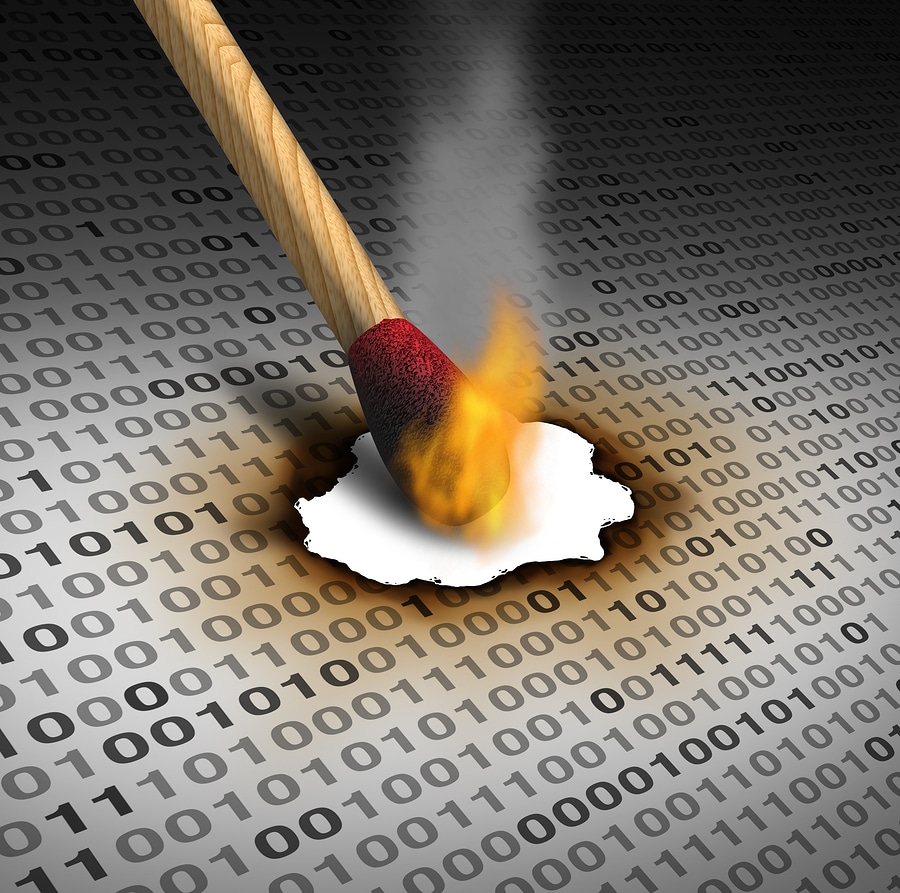What are the Different Types of Data Wiping?

When North Dakota businesses want to destroy data in keeping with applicable privacy laws, there are several ways to go about it. One preferred method is simply destroying hard drives and devices containing data by partnering with a certified ITAD service provider to shred them with industrial shredding equipment and then recycle the remains.
However, if your equipment and devices are still relatively new, you may be interested in reusing them in house (i.e. passing them on to new employees) or refurbishing them for resale to recoup some cost. Either way, you’ll still want to remove confidential data to avoid serious risks like identity theft and data breach.
There are several methods of eliminating data, but terms like deleting, erasing, wiping, overwriting, and degaussing are often used interchangeably. While all of these can eliminate data to an extent, the methods differ in important ways. What are the different types of data elimination, and why is it so crucial to wipe data from hard drives?
Deleting
To be clear, deleting data doesn’t actually get rid of it. Nor does reformatting discs following deletion. When you delete data in a file form, all you do is remove it from the visible interface (desktop, folder, etc.). The data is still on a drive somewhere and it can be recovered by an IT expert.
Even reformatting simply eliminates formatting on a disc so new information can overwrite the old. However, the old information is still there until you write over it. Deleting and reformatting are not acceptable forms of data destruction, and they will put you and your customers at risk for issues like data breach and identity theft.
Erasing
Some people use the term “erasing” synonymously with deleting. Some use it to mean wiping. Which is correct? Erasing typically means wiping data, but because of the confusion surrounding this term, it’s always best to ask ITAD service providers if they wipe data, just to be crystal clear.
Wiping/Overwriting
Wiping and overwriting are actually the same thing. The process involves completely writing over any and all data on a disc with zeros or ones so that none of the prior data is accessible. Often, wiping requires several passes and testing to ensure complete destruction of data. Along with shredding hard drives and devices, wiping (when done properly) is an acceptable form of data destruction that complies with privacy laws.
Degaussing
This is a process that destroys data by using a powerful magnet to disrupt a device’s magnetic field, rendering data unreachable. The problem is that you have no way of knowing if data has actually been destroyed because the process renders the hard drive or device inoperable. This does not comply with legal standards for data destruction, and further, it makes your devices worthless, so you won’t be able to resell them.
Why Data Wiping is So Important
There are two good reasons to stick with data wiping if you want to eliminate data and refurbish hard drives. First, it is the only method that complies with applicable privacy laws. Second, it is the best way to ensure complete data destruction without harming devices, so you can resell them and still keep your customers and your company safe.
Businesses in and around the Sioux Falls, SD area seeking superior data destruction services from a certified ITAD provider can contact SEAM at 605-274-7326 (SEAM) or online to request a quote and learn more.
SEAM provides IT recycling and data destruction services including onsite shredding and hard drive wiping to South Dakota, North Dakota, Minnesota, Iowa, and Nebraska.
Schedule a pickup or contact us for more information.





